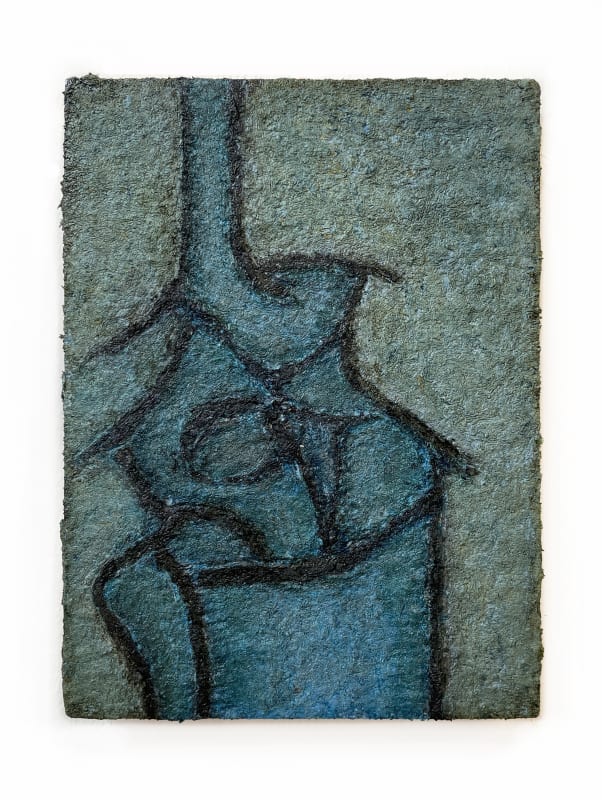Private View: Thursday the 18th of November from 6:30-9pm
London (Wandsworth)
Kristin Hjellegjerde Gallery is pleased to present Breezy, a presentation of new paintings by Gabriela Giroletti at the gallery’s Wandsworth location. Breezy is Giroletti's first solo presentation with the gallery and is on view from November 19th to December 18th, 2021.
To look at Giroletti’s work is to be enveloped in an animated terrain where swollen masses with shimmering surfaces writhe and crawl, locked into what seems like a territorial competition. In amongst the maelstrom roots get diverted, growths get stunted and billowing excesses crunch into each other. Our vantage point onto this world shifts from painting to painting. At times we appear to be above ground. At others we have fallen down a rabbit hole and are tunneling under the earth. But as we turn the burrow’s bends the walls shift like tectonic plates before transforming back into sky, revealing the inside to have been outside all along.
Giroletti is interested in the notion of the in-between and the paintings are full of things on a journey from one state of being to another. The landscape undergoes its restless mutation and the forms that inhabit it often seem to be expanding beyond their capacity or deflating as the animating energy leaves them and moves onto something new. Indeed breeziness, the sense of movement in the flickering planes that are to be found throughout the work, is itself an in-between condition; neither windy nor still, Breezy accelerates and decelerates indecisively between the two.
This stirred motion is rendered by layers of translucent directional brushstrokes of varying hues that build into a diaphanous pointillism. In “Heat Haze”, for example, streams of fizzing dots intermingle generating ripples of modulating intensity and in “Spatial Places” these dots throb and scatter like water droplets on a train window. Radiation or gaseousness come to mind, not least when the skies gleam amber orange or sap green.
The smaller works are more fragment-like. They lean towards inert mineral colours, like charcoaled fossils or bits of rock. In paintings like “Tralalitions” or “Last Not Least” the paint is heaped, dug and scraped making the surface seem like part of an excavation. Here, subtle variations of tone poke through the mottled texture, echoing the optical energy of the larger paintings.
Spatial disjuncture is another theme that underlies the work. In the smaller pieces, devices that are reminiscent of collage techniques, like cuts and fold-ins, are experimented with. In “Some Things Cosmic II” for instance, thick seams appear between the forms, stitching them together into assemblages. Also an adjunct, in the form of a perched mound of paint, materialises on top of the stretcher bar as an extension of a shape within. This causes the painting to flip ambiguously between pictorial space and objecthood.
These experiments get scaled up in the larger works where they evolve further. In “Transparent Things”, for instance, the seams between the forms are accompanied by an overlaid fade and a drop shadow. Both elements have widths that remain constant all the way round, stamping out the edge, emphasising its status as a border. And in “Compass”, dark orbs, that start out by hugging internal thresholds within the picture, escape and re-appear as separate panels on the wall. This melding together of different spaces creates an array of formal possibilities. As we witness the development of the devices from painting to painting, we start to imagine what it would be like if we combined them differently, taking a bit from one painting and placing it on another, like pieces in a board-game.
The use of emptiness in the work also conjures up this sense of possibility. Although Giroletti draws from everyday life when conceiving her compositions, most real-world details are stripped out, leaving the shapes with smooth striated surfaces. Giroletti doesn’t seek to represent the specifics of particular objects so much as the relations between them. This use of voids, cuts and in-between states is what makes the arrangements inherently open and playful. The viewer feels on the verge of stepping into the frame, picking up one of the forms, and participating in the world building themselves.
– Henry Tyrrell


